Media | Articles
A Cobra makes the case for preservation
Fifty eight years does a lot to an automobile. There are scuffs, scratches, dings, and cracks. The engine bay is maintained but unrestored, the wheel spokes gray and without gleam. The Utah front plate from 1973, when Nixon was still in the White House, is still screwed in underneath the grille.
I remove the awkward-looking fiberglass hardtop and I get inside. The seat leather is dry, cracked and ripped but nearly intact, and the transmission tunnel is worn by years of gearshifts and right arms with nowhere else to rest. It feels like the driver’s seat is on the rear axle because it nearly is. The odometer reads 54,517 miles. Time to add a few more.
I asked to drive this 1964 289 Cobra for all the reasons you ask to drive a real Cobra but also because it is about to provide a rare data point in an age-old debate: Should significant classic cars be allowed to, well, age? The car—CSX2171—is going to be auctioned by Broad Arrow* this fall, making it one of the few unrestored Cobras to be sold publicly.
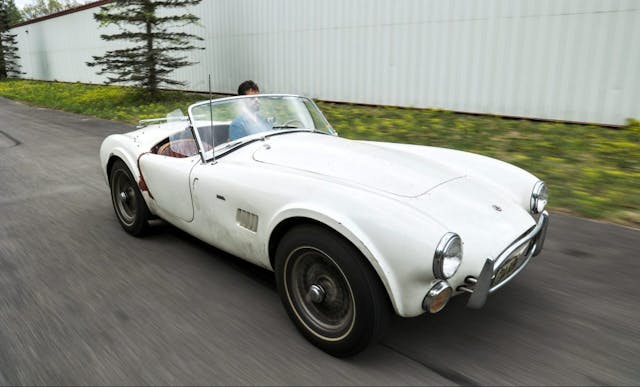
The Cobra story has been told a million times, but that’s only because it’s a damn good one. That a slick Texan racing driver talked his way into dollars/engines from Ford in Dearborn and bodies/chassis from AC Cars in England, and then combined them into a world-beating sports car. That it spanked the Corvettes in SCCA racing over here, broke Ferrari’s stranglehold on sports car racing over in Europe, and always looked good doing it. It’s the automotive embodiment of the American Dream.
Despite or maybe even because of the mythical backstory, real Cobras tended to live varied and interesting lives. They got cut up, modified, crashed by kids with a heavy right foot, or parked in a barn to gather dust and rodent’s nests. Pick up an ancient copy of Hemmings or flip to the classified pages of an old Road & Track from the 1970s or early ‘80s, and you’ll be shocked (or depressed) at the asking prices for these American icons. Always desirable, but not always expensive, at least by today’s standards.
Marketplace
Buy and sell classics with confidence
As classic cars became a hobby and a “collector car market” began to grow in the 1970s, ’80s and ’90s, rare and significant cars with compelling stories and/or a race winning past—like Cobras—took on a new importance. The restoration business expanded to bring increasingly valuable cars back to their former glory, and people started sprucing up Cobras in earnest as early as the ’70s.
All to say, unrestored Cobras are not common. This car, CSX2171, was unearthed in the 2000s. “Unearthed” is only a minor overstatement: the second owner, a doctor from Salt Lake City, bought the car in 1969 and only a few years later entombed the car by walling it off in a portion of his garage. A chapter about its discovery in Tom Cotter’s The Corvette in the Barn calls it “The Cobra in the Closet.”
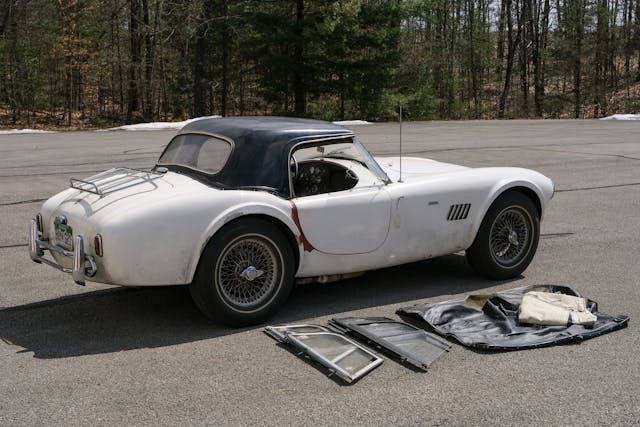
The current owner, Jim Taylor, sought to preserve its character but is also, admirably, one of those collectors who keeps his cars running and drives them regularly. Nobody washed the Cobra for this non-occasion that is some schmuck from Hagerty driving it, but detailing it would be completely missing the point.
Despite the Cobra’s mellowed appearance, it fires up with a growl and settles into a healthy Ford burble. It’s comfortable for such a racy thing, and everything—even the Smiths gauges—works as it should in a sorted car.
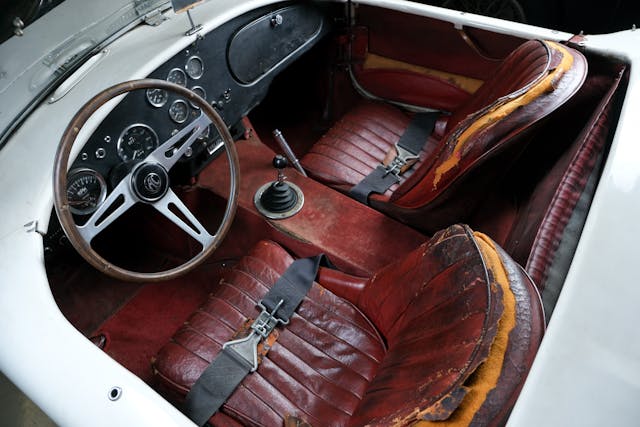
Compared to later big-block Cobras, a 289 keeps its power under wraps. It’s got trim, lithe muscle instead of the ‘roided up, body-builder bulges found on Shelby’s more powerful snake. Wire wheels and narrow bodywork drop heavy hints of AC Ace, retaining that understated English charm, while in the back of your mind you know that even the “small” 289 will make quick work of any back road.
Once on the road, I surprisingly find that this aged roadster seems tight as a drum. Everything under the fading paint feels dialed in perfectly. It doesn’t look like a car you’d feel confident taking on a long-distance rally, but it certainly drives like one.
There’s a deliberate weight I didn’t expect across the controls, but the car is just plain eager to do everything you tell it to. Especially when you tell it to go. Yes, it’s communicating through leaf springs and narrow wire wheels with tall sidewall tires. There is plenty of suspension travel and body lean. It drives like an old car, and when warmed up, it smells like one too, but there’s no arguing with the physics of a big V-8 in a featherweight chassis. A HiPo 289 pushes forward with authority in a Mustang; in a Cobra, it leaps, shouting at you all the way. Even after all the years of reading about how these cars perform, the mile-wide torque curve and the shove in the back are a little surprising from a car that’s older than the moon landing. That anybody would get into a 289 Cobra and decide it needed a bigger engine with more power is crazy, but Shelby and his team were geniuses of the maddest kind.
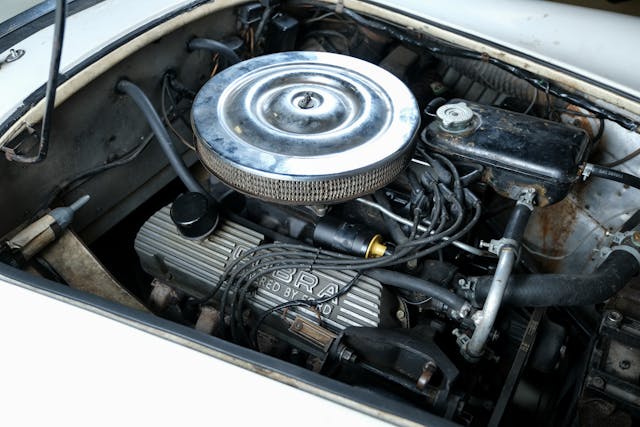
I’d be lying if I said the monetary value of this car totally left my mind, yet there’s something familiar about the brash blue-collar small-block up front, and the snug British roadster layout of the cockpit in the middle. After all, many of the moving parts are mass-produced Ford bits. Service manuals for a Mustang, the most popular classic car in America, will help you fix a Cobra. There’s something reassuring about that.
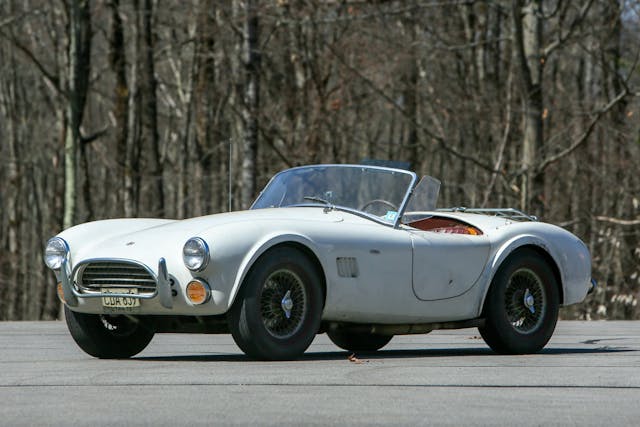
So, this patinated piece of sports car royalty looks like an artifact but drives like a bat out of hell. It’s a great combo, and not one that’s easy to find—but also tough to put a dollar figure on (of course, the folks at Broad Arrow have tried, with an estimate of $900,000–$1,200,000). The buried treasure mystique of a barn find Lamborghini or Steven McQueen’s unrestored Mustang can translate to big money. “Unrestored” is increasingly a good word, and we’ve all seen what kind of bid an ultra-low-mile original car can attract on Bring a Trailer.
Yet we have, conversely, also seen values for top-condition cars pull away from the rest. The Cobra is part of that trend. Hagerty Price Guide median #2 (Excellent) values for 289 Cobras have more than doubled over the past 10 years, from $506,000 to $1.2M. More aged Cobras in #3 (Good) condition also appreciated by large margins and over the same period but to a smaller degree, from $464,000 to $902,000.
In the last several years, only a few unrestored Cobras have crossed the block, amidst a crowd of shinier snakes. The best-known and most successful was CSX2000, which sold for a record $13.75M back in 2016. Its time-warp presentation certainly helped push it to that price, but the bulk of that number was due to the fact that CSX2000 was the very first Cobra. The other two other major standouts were CSX2149 (the famous cover car from Tom Cotter's Cobra in the Barn) and CSX2344 (an unrestored 15,500-mile car with single family ownership). CSX2149 was a $900,000 no-sale in 2018 and CSX2344 sold in 2017 for $1.1M. Strong numbers for preservation cars, to be sure, especially compared to an aged restoration or a car with red flags. That said, excellent restored cars have sold for that much or more. This sale will help more closely pinpoint the influence of the preservation trend on Cobras.
Regardless of price, the debate over whether to restore or preserve will persist. No doubt some of you, scanning the photos, will only see things that need fixing and imagine the joy in making something old new again. That's not "wrong." Yet if it's a choice between nice shiny 289 Cobra, recently taken apart and put back together again to look like it just rolled out of Shelby American, or a scruffy time capsule with all the bits and finish that actually did roll out of Shelby American, I'd go with option two.
*Hagerty has entered into a joint venture with Broad Arrow Group. You can read more about it here.
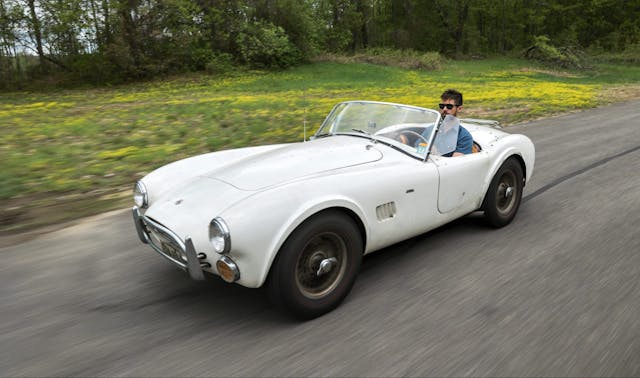
















I say drive it as is. Would a restoration raise the value of the car more than the cost of the restoration? Probably not, especially if the car is already at or near $1 million already. Enjoy the car as is, and not be afraid of rock chips or door dings or scratching the paint!
Put the decision to restore off as long as possible IMO. Drive it, and when something needs attention, perform a sympathetic restoration to keep the character intact.
If I didn’t know its history, I would change all fluids, grease it and align it.
I’ve been into Shelby’s “sport” cars ever since I saw the cover on the August, 1982 edition of Popular Mechanics magazine’s coverage of 3 Cobra kits. I wound up building a Contemporary Classic in the mid 90’s, sold it, then built a Shelby continuation 289 FIA about 20 years ago.
In all that time I’ve never seen anything close to what I think I’m seeing occupying the area below the headlights on a replica let alone an original. I can’t unsee it! Please! Someone help me understand.
I have a 1/25 scale model of this car “Made Especially For E.U. Jacobs” as printed on the display stand. I bought a massive scale model car collection from his grandson last year and this car was in it. It’s complete with white exterior and red interior. Very nice piece of history.